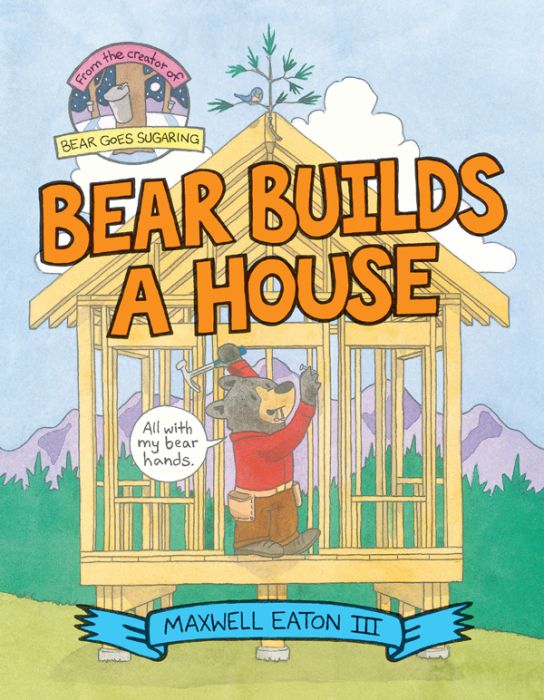
Bear Builds a House
Written and illustrated by Maxwell Eaton, III
Edition
Written and illustrated by Maxwell Eaton, III
Hardcover edition
Publisher Holiday House Imprint Neal Porter Books ISBN9780823447145
Bear Builds a House
 17.55
17.55
Out of stock
SKU
9780823447145J
Bear’s next project is her most ambitious one yet, she’s going to build a house! But can she and her friends finish before winter sets in?
The bear from Maxwell Eaton’s Bear Goes Sugaring returns in this fascinating follow-up, and this time, she’s going to build a house entirely from scratch! To do so, she’ll need time, careful planning, sturdy materials, and a whole lot of help from…most of her friends.
Readers will see a house built before their very eyes as they are guided through detailed descriptions of each step in the construction process, from site selection, to chopping trees to make wooden planks, to laying down foundations, insulation, and power and plumbing. Key to the process is Bear’s attention to sustainable architecture, an excellent lesson for kids who want to learn about clean energy and sustainable planning. As in Bear Goes Sugaring, readers will love Maxwell Eaton’s humorous approach to a serious subject and the antics and funny dialogue that Bear’s animal cohorts contribute.
The bear from Maxwell Eaton’s Bear Goes Sugaring returns in this fascinating follow-up, and this time, she’s going to build a house entirely from scratch! To do so, she’ll need time, careful planning, sturdy materials, and a whole lot of help from…most of her friends.
Readers will see a house built before their very eyes as they are guided through detailed descriptions of each step in the construction process, from site selection, to chopping trees to make wooden planks, to laying down foundations, insulation, and power and plumbing. Key to the process is Bear’s attention to sustainable architecture, an excellent lesson for kids who want to learn about clean energy and sustainable planning. As in Bear Goes Sugaring, readers will love Maxwell Eaton’s humorous approach to a serious subject and the antics and funny dialogue that Bear’s animal cohorts contribute.
Author’s note. Further Reading. Full-color illustrations were created with watercolor and graphite pencil.
|
Standard MARC Records Cover Art |
Nonfiction Early Elementary (Grades PreK-2)
Nonfiction Early Elementary
Nonfiction Early Elementary (Grades PreK-2)
For Grades PreK-2
This collection introduces early learners to science, history, animals, and more with 12 beautifully illustrated nonfiction books per year. With easy-to-follow narratives and interactive storytelling, these selections inspire curiosity and a love for learning.
12 books per Year
$242.16 per Year
Interests
Animals, Beginning Readers, Nonfiction, Picture Books, Science/STEAM, Storytime/Read Alouds




